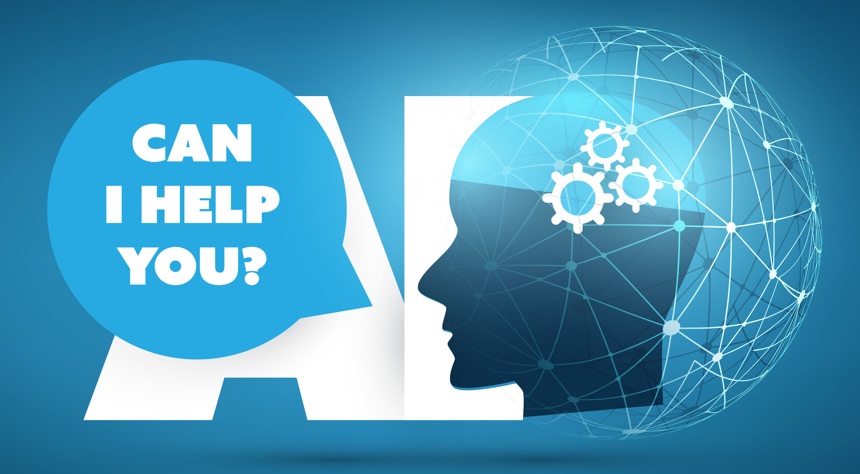Do you hate writing cover letters? Most job seekers do. So isn’t it a good idea to use an artificially intelligent bot like ChatGPT to help generate your cover letters?
Yes and no.
This new and exciting technology can help you apply for jobs. But hopping onto ChatGPT without knowing how to properly use it can come back to haunt you.
In this article, we’ll go over the six most common mistakes people make when using ChatGPT to write their cover letters.
What is ChatGPT and why should you use it?
ChatGPT is an artificially intelligent language model that can generate human-like responses to text-based prompts.
For example, if you type in the prompt “Should I write a cover letter when applying for a job?” ChatGPT will respond with something like this:
“Yes, it is generally recommended to write a cover letter when applying for a job, as it can help you stand out from other applicants and demonstrate your interest and qualifications for the position.”
This tool is not only free and easy to use, but it’s also massively popular.
ChatGPT attracted over 100 million active users within the first two months of its launch in November 2022. This makes it the fastest-growing consumer app in history!
Why should you use ChatGPT to help you write your cover letters?
Because it will save you time and effort. This will allow you to focus on other important aspects of your job search, like networking and researching companies.
Pro Tip: Want to save even more time and effort? Try Jobscan’s cover letter generator. This easy-to-use tool uses AI technology to generate a highly personalized cover letter for you with just one click!
It’s important to remember that ChatGPT is a tool, not an intelligent human being.
Because ChatGPT seems so smart, people often make the following mistakes when using it to generate their cover letters.
The 6 most common mistakes people make when using ChatGPT for cover letters
All six of the following mistakes arise from one common misconception – that ChatGPT is capable of doing ALL the work for you.
This is simply not true.
ChatGPT is “not perfect,” when it comes to writing cover letters, says career coach Harrison Hughes, “B- range if I am being honest. However, B- for what essentially should be treated as a first draft is not bad at all.”
Remember, ChatGPT is only a tool that can help you write a cover letter – it’s not the complete answer.
Mistake #1 – Using only the job description to generate your cover letter
The easiest way to generate your cover letter using ChatGPT is to simply paste the job description into the prompt box. Then tell the bot to write a cover letter for that particular job.
At first glance, the cover letter ChatGPT generates for you might appear to be good.
But there are two problems with this approach:
1) The letter won’t reflect your accomplishments and experience.
2) You’ll probably be found out by the hiring manager.
One employer received a cover letter that seemed a little too perfect. She then pasted the job description into ChatGPT and received back—the exact same cover letter!
“I knew it was written by a bot because the cover letter was just verbatim repeating the job description, with no details about the applicant.”
Don’t do this! At the very least you need to paste your resume along with the job description into ChatGPT.
By analyzing your resume, ChatGPT can then incorporate your skills, experiences, and qualifications into the cover letter.
Mistake #2 – Using only your resume to generate your cover letter
This is the opposite of the first mistake. Sometimes job seekers will prompt ChatGPT using only their resume and nothing else.
Again, the bot will return a fairly well-written cover letter. But the letter will basically just regurgitate your resume. This won’t impress hiring managers.
Even worse, some people will use this same cover letter for all their job applications.
First of all, your cover letter should support, not regurgitate, your resume. It can do this by supplying additional information about your qualifications, accomplishments, and experience.
Second, cover letters should be tailored to the job you’re applying to. This means highlighting the skills and attributes that would make you a great fit for that specific role.
A cover letter based solely on your resume doesn’t fulfill either of those needs.
At the very least, you should use both your resume and the job description to prompt ChatGPT.
Jobscan’s cover letter generator does all this for you with just a single click. It uses AI-powered technology to create a personalized cover letter for you that is perfectly tailored to the job you’re applying for.
Check out this brief video to see how our cover letter generator works:

Even then, there’s still more work to do if you want a cover letter that will actually get you an interview.
Mistake #3 – Not adding a personal touch to the cover letter
While ChatGPT is an amazing tool, it doesn’t have much of a personality. In other words, the content it generates can be generic and boring to read.
“AIs are brilliant at being average,” says Neil Taylor, the founder of the UK-based communications company Schwa. “If you’re writing something that actually needs to stand out…it’s not going to cut the mustard.”
Again, while ChatGPT can give you a solid first draft of a cover letter to work with, it’s up to you to inject some of your personality into it.
Here are some things you can do to make your cover letter reflect your unique voice and experiences:
- Personalize the opening by briefly explaining why you are interested in the position and how you’d be a great fit.
- Highlight your achievements, awards, or certificates that are relevant to the position.
- Use numbers or metrics to provide concrete evidence of your skills and abilities.
- Share stories of how past experiences have prepared you for this role.
- Match the job requirements with your specific qualifications and skills.
- Explain why you are passionate about the industry/company.
- Showcase your extracurricular activities such as volunteer work or hobbies that make you stand out from the rest.
- Discuss how your values align with the company’s mission and goals.
- Conclude with an enthusiastic statement that conveys excitement for the opportunity.
Remember, the whole point of a cover letter is to display your personality and show why you are the best candidate for the position.
By adding a personal touch, you can make your cover letter more memorable and impactful.
Mistake #4 – Don’t misrepresent yourself in your cover letter
What happens when you give ChatGPT prompts that are too broad or vague?
It makes stuff up.
For example, if you ask ChatGPT to write a cover letter for an accounting position, it might say that you have experience using QuickBooks – even though you’ve never used it.
Why would ChatGPT do this? Maybe Quickbooks was mentioned in the job description. Or maybe the bot just assumes you know QuickBooks since it’s a popular accounting software.
It’s not uncommon for ChatGPT to make assumptions about your experience, skills, and knowledge that don’t reflect reality.
Even if you provide ChatGPT with your resume and other details, it can still misrepresent you.
It might be tempting to accept all of ChatGPT’s suggestions, even if they’re not true. But YOU are ultimately responsible for what goes in your cover letter.
You must check to make sure that all of the facts and information in your cover letter are true and accurate.
Don’t blame ChatGPT for inaccuracies found in your cover letter!
Mistake #5 – Using ChatGPT’s tone of voice in your cover letter
ChatGPT has been trained to produce coherent and grammatically correct sentences.
But those sentences won’t necessarily reflect your tone of voice.
If you are using ChatGPT to generate your cover letter, try to insert your own personality and voice into it as much as you can. The letter will be more effective if you do.
Here are some tips on how to insert your voice into your cover letter:
- Read through your cover letter, highlight the parts that don’t feel like you, and rewrite them using language that feels more natural.
- Add personal anecdotes and experiences that are relevant to the job you’re applying to.
- Use language that reflects your sense of humor, creativity, or other personal qualities.
- Use active voice and strong verbs to make your cover letter more dynamic. Passive voice and weak verbs make your writing sound flat.
- Get feedback from people who know you. They’ll tell you when your cover letter doesn’t sound like you.
Mistake #6 – Not making your cover letter ATS-friendly
What does ATS mean?
It stands for “application tracking system”. This is computer software that most companies use these days to help them manage the hiring process.
When you submit your job application it doesn’t go to a human being – it goes directly into an ATS database. Hiring managers then search the database for suitable job candidates by typing in keywords related to that job.
For example, an employer searching for an administrative assistant might type in “data entry” or “MS office”. If your cover letter includes those keywords it will show up as a result.
Where do you find these keywords that will optimize your cover letter for the ATS? In the job description.
This is why you should always include the job description as a prompt when asking ChatGPT to generate your cover letter.
Don’t make the mistake of assuming ChatGPT will always add the most relevant keywords to your cover letter. After all, it doesn’t know what ATS is or how it works!
Always check the job description yourself or use a resume scanner to make sure your letter contains the keywords hiring managers are searching for the most.
Key Takeaways
Despite the pros and cons of using ChatGPT discussed in this article, overall it’s a great tool that can help you save time and effort when writing your cover letters.
Remember, ChatGPT is great at creating first drafts – not polished final versions.
You’ll still need to add your own personality, check for inaccuracies, and fill in missing information.
If you want to be sure to avoid the common mistakes listed in this article, try using Jobscan’s cover letter generator.
Powered by AI technology, Jobscan uses industry best practices to create cover letters that will get you more job interviews. It does this by….
- Analyzing both your resume and the job description.
- Tailoring each letter to the specific job you’re applying for.
- Focusing only on the skills you have listed on your resume.
- Featuring your most relevant accomplishments and measurable results.
- Creating a cover letter that is keyword-rich and ATS-friendly.
- Organizing all your cover letters in one place for easy access.
Jobscan is a powerful tool that can quickly generate strong cover letters. As with any AI tool, we recommend that you still take the time to review and customize it before sending it off.
With Jobscan’s cover letter generator, you’ll be able to get a quality cover letter while avoiding many of the mistakes others make by doing it alone.
More expert insights on this topic:




















